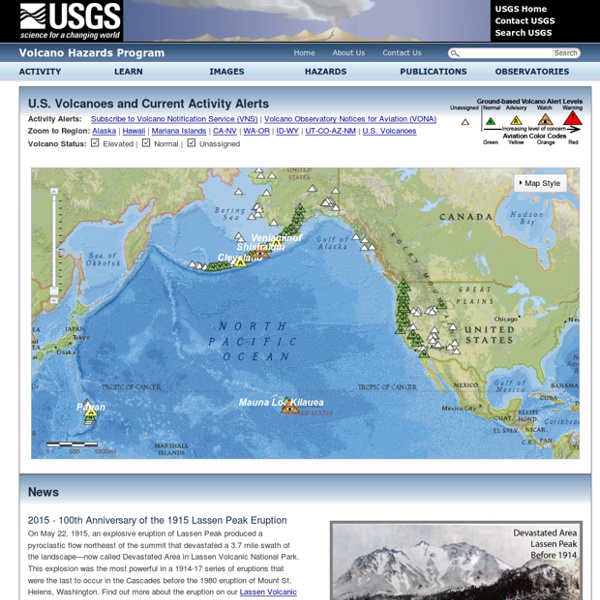



Terrestrial Volcanoes Terrestrial Volcanoes By turns hot embers from her entrails fly, And flakes of mountain flame that arch the sky.-Virgil's Aeneid Volcanoes destroy and volcanoes create. National Earthquake Information Center - NEIC Earthquake Hazards Program National Earthquake Information Center - NEIC The mission of the National Earthquake Information Center (NEIC) is to determine rapidly the location and size of all destructive earthquakes worldwide and to immediately disseminate this information to concerned national and international agencies, scientists, and the general public. This Dynamic Earth View of the planet Earth from the Apollo spacecraft. The Red Sea, which separates Saudi Arabia from the continent of Africa, is clearly visible at the top. (Photograph courtesy of NASA.) Ordering Instructions This book was originally published in paper form in February 1996 (design and coordination by Martha Kiger; illustrations and production by Jane Russell).
List of large volcanic eruptions in the 21st century This is a list of volcanic eruptions of the 21st century measuring a Volcanic Explosivity Index (VEI) of at least 4, as well as notable smaller eruptions. Note that the size of eruptions can be subject to considerable uncertainty. See also[edit] References[edit] External links[edit] Volcano Livecams - Volcano Livecam If you add a link, please add it in the form: "volcano name livecam of source" and also add it to the related volcano category. Please register on the left side near the bottom for this. Thank you for your contribution! See on the bottom of the page for a map which is showing all the registered livecams. Klick on this link to get a list of all volcanoes covered in this directory. Thanks to Fred Rostorfer, Jamie Trouskie, Kevin Rogers, J.
Volcano Information Center (VIC) Thuban is a former Pole Star Thuban is not a particularly bright star, but it holds a special place in the hearts of stargazers. That’s because Thuban was the Pole Star some 5,000 years ago, when the Egyptians were building the pyramids. Among the many mysteries surrounding Egypt’s pyramids are the so-called “air shafts” in the Great Pyramid of Giza. These narrow passageways were once thought to serve for ventilation as the pyramids were being built. In the 1960s, though, the air shafts were recognized as being aligned with stars or areas of sky as the sky appeared for the pyramids’ builders 5,000 years ago. The Great Pyramid of Giza, an enduring monument of ancient Egypt.
New Madrid Zone sismique - cartes de l'activité séisme passé Earthquake lights Earthquake lights have been seen since ancient times. 1811-12 New Madrid quake eyewitnesses saw them possibly from as far away as Savannah GA. They were first photographed in 1968 in Japan. USGS admits their existence. Records of earthquakes that were accompanied by sky lights can be found in 373 BC in ancient Greek writings, that "immense columns of flame" foretold the earthquake that destroyed the cities of Helike and Bura.
San Andreas Fault Homepage: Information, photos, maps, fault location and more! Seismic Monitor - Recent Earthquakes The actual min mag shownon the map is about 4.2,to get a uniform distribution. Latest El Niño/La Niña Watch Data Archive of All Images These are the latest images from the OSTM/Jason-2 satellite. Jason-2 continues providing the uninterrupted time-series that originated with TOPEX/Poseidon. Jason is using radar altimetry to collect sea surface height data of all the world's oceans.